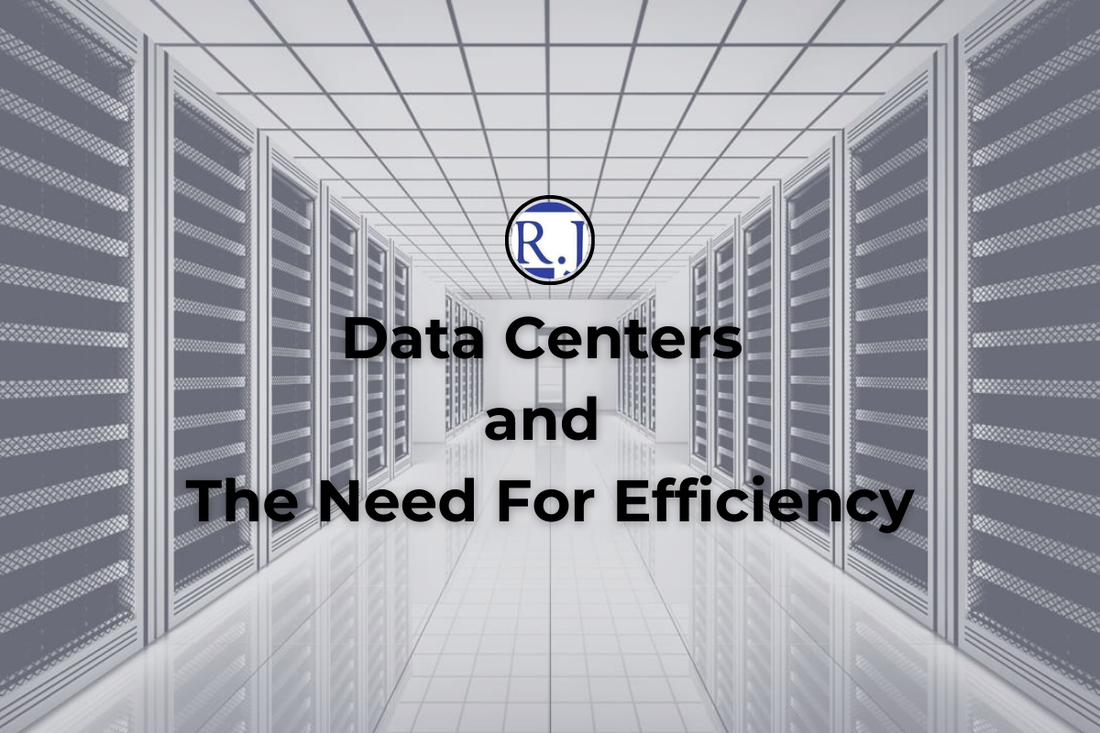
Data Centers and The Need For Efficiency
Share
Data Center Price Tags
$1.8 billion dollars. That’s the projected cost of Microsoft’s investment into three physical data centers in the Atlanta area. $750 million dollars, an investment from Facebook (now Meta) into developing a new data center in Stanton Spring back in 2018. $1.3 billion dollars. That is an investment into a single data center spanning 400,000 sq ft in Waukee, Iowa by Apple.
While these numbers may represent the cream of the crop of what data centers cost can rise to, it’s no question that data centers are one of the most expensive infrastructures to build and maintain in today’s world. This fact is even more so true, as demand for faster data collection and the rise of artificial intelligence surges. In modern networking infrastructure, data centers are the backbone of what allows our services to run seamlessly and at a high performance. But what are they exactly?
What are Data Centers?
Data centers are facilities containing servers, data storages, routers, switches, and other networking equipment. All together, they are designed to efficiently process and store high volume data that are our online services, platforms, and files. This function is similar to what our personal computers do. However unlike our personal devices, data centers are built for scale and a larger collection of end users. And when factoring in other costs such as real estate, electrical systems, cooling systems, energy consumption, staffing, and more… It's no surprise that these infrastructures can cost anywhere from millions, to hundreds of millions, if not billions of dollars.
The focus on delivery from these data centers is what leads to the cost, but it would be completely untrue to say that the money spent isn’t a point of consideration for these businesses and investors. At the end of the day, there needs to be a justifiable reasoning and return to approve these investments. Justifiable reasoning to spend over $100 billion dollars into power utilities alone by 2030. Justifiable returns for an 5% - 15% industry price increase in constructing new data centers in 2024. The benefits of these facilities are clear, if not essential for future technological developments such as AI. The question now is, how can data centers operate more cost-effectively?
The Increasing Costs of Data Centers
Before we discuss more cost-effective solutions, we have to take a deeper dive into why the cost of data centers are increasing to better understand the root cause.
- Supply and Demand
For the last few years, the trend of digitalization and the rise of more and more artificial intelligence technologies has led to an increased demand for data centers. In 2024, Google alone processed over 8.5 billion searches daily… and that number has been increasing year after year since 1998. On the AI side, ChatGPT (an AI-powered Large Language Model) welcomed more than 100 million weekly users and over 10 million queries daily in 2023. Every single online search and AI query requires a server and storage to process and store these data. With more people adopting newer AI technologies and not enough data centers being built fast enough to meet these needs, there is naturally an imbalance between supply and demand. Paired with logistical constraints of supply chains and markets lacking enough skilled labourers, the cost in constructing data centers has skyrocketed.
- Capital Costs
Another cause of the increased costs lies in the available capital and the decade-high inflation rates. With major data center market countries such as the US, UK, Germany, and Netherlands experiencing rates of 8.2%, 10.1%, 10.4%, and 14.5% respectively in 2022, every data center operator is burdened with difficulties in raising enough capital for expansion. For both big and smaller data center operators, the higher overhead costs is a challenge to seek out cost-effective solutions to maintain competitiveness and cost.
- Energy Consumption and Sustainability
Rising adoption of new technologies and digitalization requires sufficient energy to meet the computing and data demands. In the US alone, data centers account for roughly 4% of the electricity consumption. This number is projected to rise to 9.1% by 2030 in a research by the Electric Power Research Institute (ERPI). A 9.1% increase by the end of the decade equates to providing an additional ~50 GW of power for the new data center capacity. A 9.1% increase that includes current limitation of readily available power sources, the need for more electrical infrastructure, and more power equipment.
Sustainability adds another layer of complexity to this dilemma. Increased power consumption leads to increased heat generated, which in turn requires adequate cooling to maintain each server's functionality. However to meet sustainability efforts, equipment and operations needs to be fine tuned to meet an optimal setting. With environmental efforts to reduce carbon emission and power consumption and the drive for competitive performance, it’s not always feasible for data centers to operate accordingly. A balance between the increased power consumption and sustainability can once again lead to higher costs.
- Operating and IT Infrastructure Cost
Alongside the aforementioned energy costs, IT equipment costs and other operating expenses such as staffing and additional space contribute to the increase in unit cost for data centers. IT equipment demand has outstripped the capabilities of current supplies since the pandemic. Similarly, retention of staff presents another challenge as competition in the market leads to more attractive offers from bigger industry players. Cost in additional space needs no further explanation as raising additional capital and laborers remains difficult in the current climate.
The Need for Efficiency: High Density Patch Panels, Cloud Computing, and Optimizing Inefficiencies
When developing new infrastructures, it’s never a simple process due to the many different concerns and variables. These said concerns and variables (in the form of supply chain issues, constraints of older facilities, rising prices and inflation) all share in common a need for efficiency and maximizing space utilization.
- Applying Fixes to Inefficiencies in Operations
Identifying inefficiencies in power usage and cooling can allow operators to plan actionable fixes and reduce cost. These actionable fixes would generally include the usage of energy efficient networking equipment and power management strategies that help reduce idle power consumption. Operators can further reduce energy consumption, cooling needs, and save more space using data to generate more effective management strategies.
- Consider Using SaaS/IaaS/PaaS for Network Needs
Cloud computing is another solution for businesses and enterprises requiring computing power and storage. Cloud computing allows businesses and enterprises to utilize these services without actually owning a data center themselves. This greatly reduces cost due to the lack of need for capital for hardwares and softwares, as well as data center maintenance cost among many other things. Cloud computing, however, still requires physical data center locations operated by the service providers. For the operators, the cost in data center construction and maintenance still exists. Which is why optimizing their infrastructures from the cooling systems to the server racks is extremely important.
-
Utilizing Space Saving Equipments
One area where data center managers can tackle this issue is on the very server racks that compute all the information and data of the networking systems. With a patch panel, data center operators can ensure a clean cable structure, optimal connectivity, and generally reliable and organized network operations. These networking equipment have long become a staple in the industry, but with the new demands for efficiency and cost-effectiveness, operators should consider the usage of high density patch panels. These patch panels serve the same purpose as their standard counterparts, however they feature a higher port density. The higher port density allows users to save more space on their racks and leads to scalability in any networking setups. Read more about high density patch panels in our blog or check out our infographic!

Data Center Optimization, Last Words
The industry trends forecast a greater emphasis being placed on optimization. In the face of increased costs and increased demands, data center operators will need to plan accordingly for their facility operations and constructions. A shift in the focus from delivery of services to optimizing utilities for the advent of AI and future technological development will be the next major point of consideration. All in all, data centers will remain extremely prevalent in the upcoming decades and how managers position themselves for future expansion will play an integral role in their market competitiveness.








